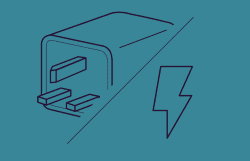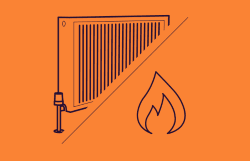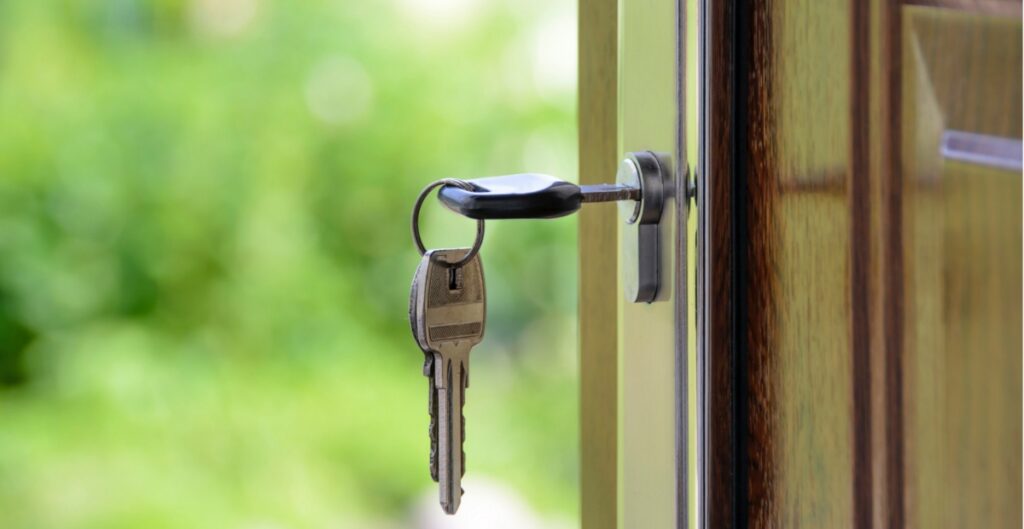Moving into a new home is an exciting time, but it can also be a stressful one. With so much to think about on the day you move, from finding furniture to getting used to a new neighbourhood, it can be easy to overlook the essential task of setting up gas and electricity. However, this is an essential task that should not be overlooked. In this blog, we’ll be discussing the best advice for setting up gas and electricity for your new home, so read on for more information.
Turning On Gas And Electricity For The First Time When Moving
To make the process easier, here are some tips for turning on gas and electricity for the first time when moving:1. Contact Your Utility Company: Before you move into your new home, you’ll need to contact your utility company or gas/electricity provider to arrange for the transfer of your service. You should do this at least two weeks before you move in. Your provider will be able to tell you what documents you’ll need to bring in order to open an account and the deposit required for the service.2. Gather the Necessary Paperwork: You’ll need to have proof of identity, such as a driver’s license or passport, as well as proof of residency, such as a lease or deed. You’ll also need to have your social security number and a current utility bill in your name. It’s also a good idea to bring a copy of your credit report if you have one.3. Set Up Your Gas and Electricity: Once you have all of your paperwork in order and have contacted your utility company, it’s time to actually set up your gas and electricity. Your utility company will be able to give you all the information you need to get started. They will also walk you through the steps needed to make sure your gas and electricity are working properly when you move in.4. Test Your Gas and Electricity: Before you move in, it’s important to test your gas and electricity. You can do this by turning on all of your appliances, lights, and other items that require gas and electricity to confirm that they are working properly. This is important not only for safety reasons but also to make sure that your gas and electricity bills are accurate.
How To Set Up Gas And Electricity In Your New Home
One important step in the process is setting up your gas and electricity. Here are some tips to help you turn on gas and electricity for the first time when moving.
- Research energy providers: Before you move in, research the different energy providers in your area. Compare their rates, customer service, and any other factors that are important to you. This will help you choose the provider that best meets your needs.
- Notify your current energy provider: If you’re moving from one house to another within the same area, you’ll need to notify your current gas or electricity provider. This will ensure that your service is transferred to your new address and that your old address is properly disconnected.
- Set up your new service: Once you’ve chosen a provider, you’ll need to set up your new service. This typically involves filling out an application and providing proof of residence. You may also need to pay a deposit or provide a credit check.
- Schedule a meter reading: Once your service is set up, it’s important to schedule a meter reading. This will ensure that your energy usage is accurately reflected on your bill and that you’re only paying for what you’re using.
- Check for gas leaks: Before using any gas appliances, it’s important to check for gas leaks. This can be done by smelling for gas or by using a gas leak detector. If you suspect a leak, turn off the gas supply and contact your energy provider immediately.
- Understand your energy bills: Once you’re settled in, it’s important to understand your energy bills. This will help you budget for your energy usage and identify any issues. You’ll want to make sure you had your final bill before you switch suppliers too.
Should I Call My Gas And Electricity Supplier When I Move Home?
If you’re moving home, it’s important to make sure that you take the necessary steps to ensure your gas and electricity supply continues without interruption. One of the key steps you need to take is to contact your current supplier to let them know you’re planning to move.By contacting your current supplier, you can make the process of transferring your gas and electricity supply to your new home much easier. After all, your current supplier already has all your details on file, so they can make the necessary arrangements to ensure your new home has a continual supply of energy.When you contact your supplier, you need to provide them with the necessary information regarding your move. This includes your new address, plus you’ll also need to let them know the date of your move. It’s also essential that you provide your current supplier with at least two weeks’ notice before you move, as this will give them enough time to make all the necessary arrangements.When you contact your supplier, it’s important to ask them what their terms and conditions are for transferring your energy supply. This may vary from supplier to supplier, so it’s essential that you understand exactly what you’ll need to do.
Should I Get A Prepayment Meter For A New Property?
Whether or not you should get a prepayment meter for a new property is something that you have to decide for yourself. It’s important to consider the advantages and disadvantages of having a prepayment meter installed before you make any decisions. It will depend on how you want to pay for energy and this will be unique to your home. If you’re looking for a secure, cost-effective way to manage your energy usage, then a prepayment meter could be a great option for you. You can keep track of your energy usage, and you’ll never have to worry about falling into debt with your energy supplier.On the other hand, if you’re looking for a more flexible option, then a standard meter might be a better choice. With a standard meter, you can pay your energy bill in monthly instalments, and you’ll have the freedom to switch energy suppliers whenever you want.At the end of the day, the decision of whether or not to get a prepayment meter for a new property is yours. It’s important to weigh up all the pros and cons before making any decisions, and make sure that you’re comfortable with whatever choice you make.
Do I Need A New Energy Supplier?
When moving to a new home, one important question to consider is whether or not you need a new supplier. The answer to this question depends on a few factors. If you are moving within the same service area, you may be able to keep your current energy supplier. In this case, all you need to do is notify your supplier of your move and they will transfer your service to your new address. However, if you’re moving to a new area, you may need to switch to a different supplier that services that area. Another factor to consider is whether or not you are satisfied with your supplier’s rates and services. If you’re not happy with your supplier, you may want to consider switching to a new one. Researching different suppliers in your new area and comparing rates and services can help you find a supplier that meets your needs. It’s also important to be aware of the different energy tariffs available to you. Some tariffs are specific to certain regions or energy suppliers and if you don’t know what options are available to you, you might end up paying more than you need to.
Should I Switch My Gas And Electric Supplier When Moving House?
Firstly, it’s important to consider whether your supplier serves the area where your new home is located. If your current supplier does not service your new area, you will need to switch to a supplier that does. Secondly, you should consider whether you are satisfied with the rates and services offered by your supplier. If you’re not happy with your supplier, switching to a new one can be a good idea. Researching different suppliers in your new area and comparing rates and services can help you find a supplier that meets your needs. Another factor to consider is the different tariffs available to you. Some tariffs are specific to certain regions or energy suppliers, as well as various offers like a standard tariff and standard variable tariff, so it’s always good to explore different options and compare them to find the best deal.




